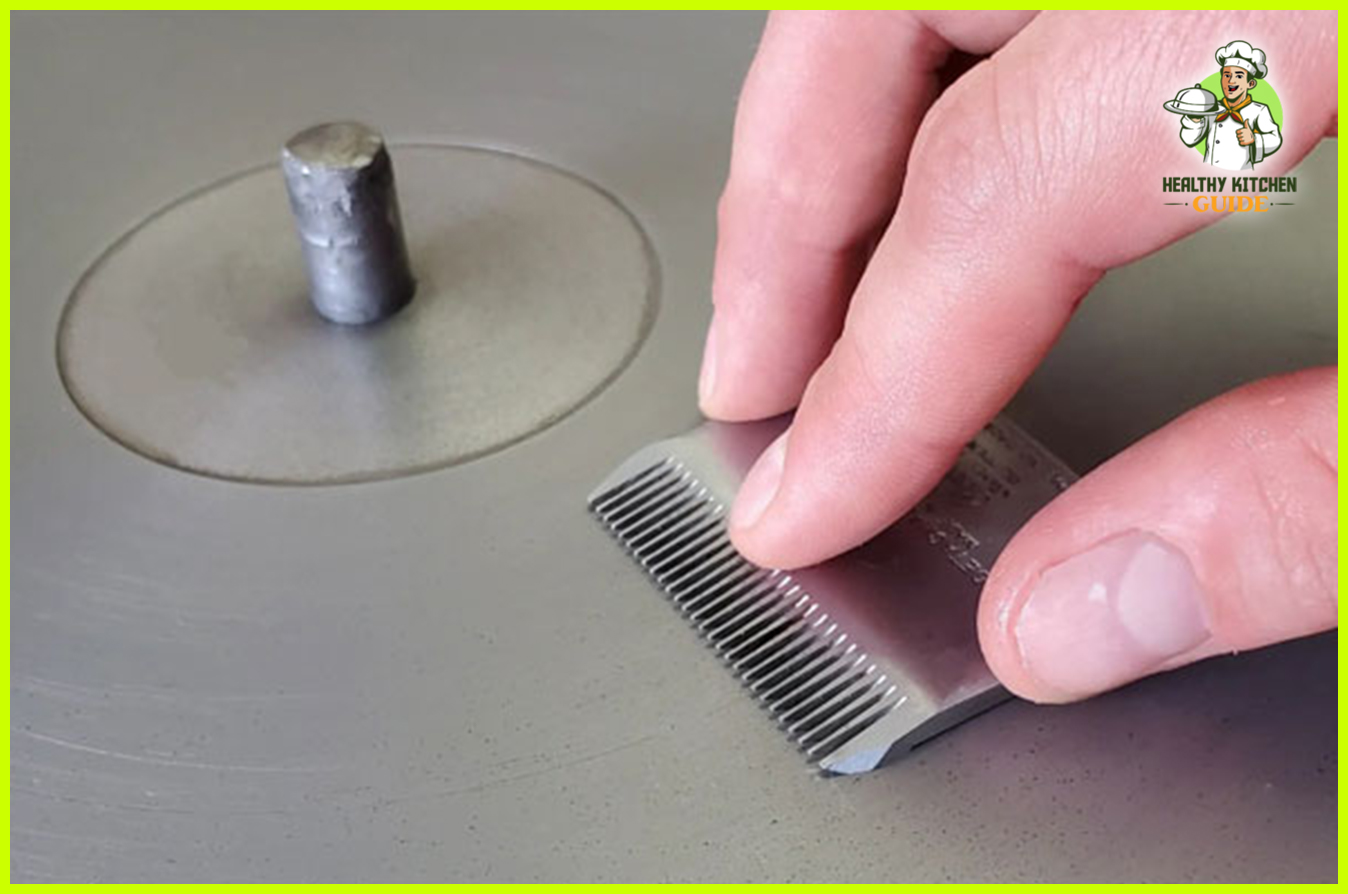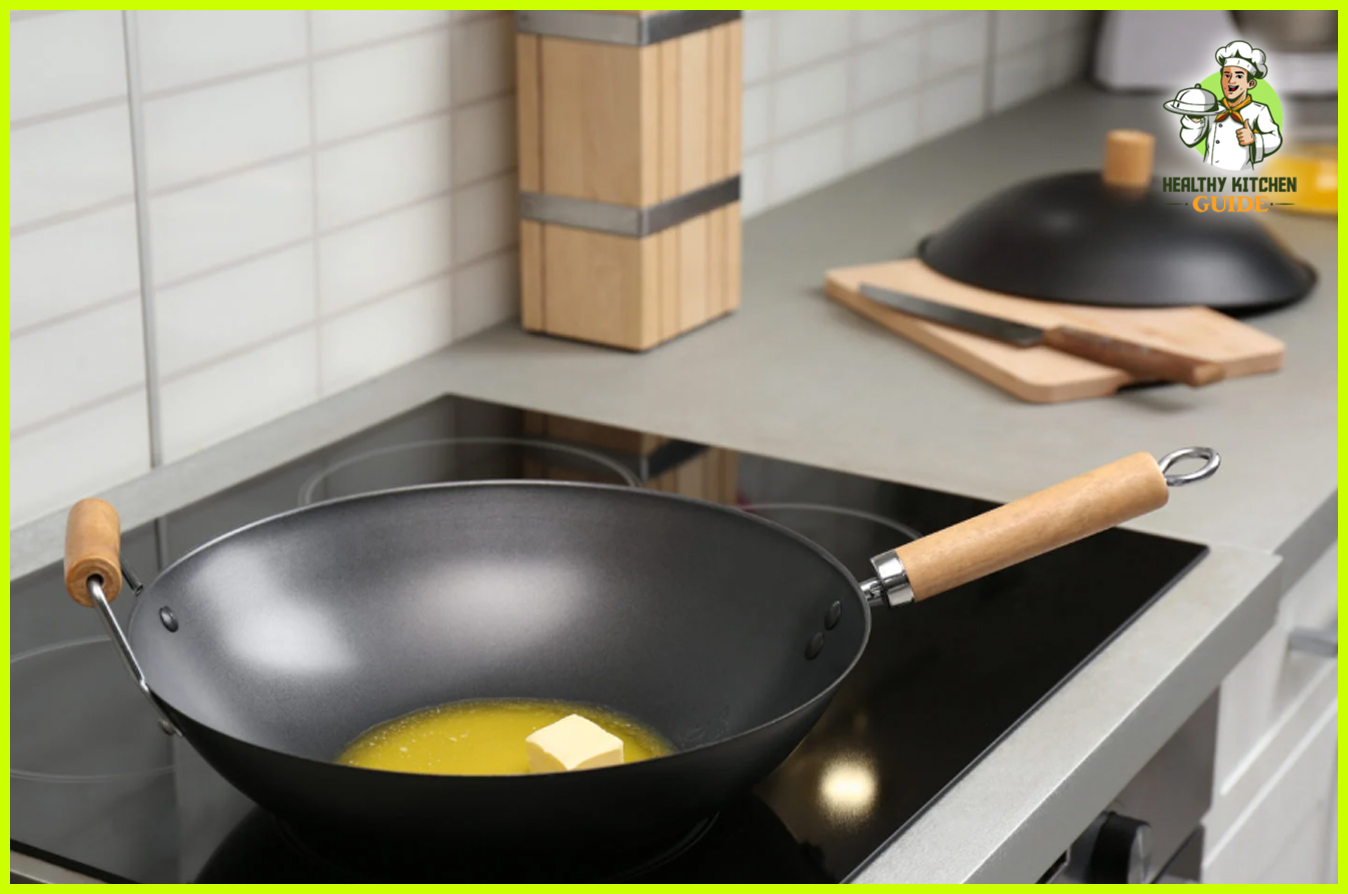To remove rust from a knife, you can use vinegar and a scrubbing pad. Apply vinegar to the rusted area and scrub using the pad until the rust is removed.
Why Rust Accumulates On Knives
Rust is a common problem that occurs on knives due to various reasons. Understanding these causes can help you prevent the accumulation of rust and maintain your knives in the best possible condition.
Common Causes Of Rust On Knives
- Exposure to moisture: When knives come into contact with water or are exposed to humid environments, it can lead to the formation of rust. It is essential to dry your knives thoroughly after each use to prevent moisture buildup.
- Poor storage: Storing knives in damp or unventilated areas increases their chances of rusting. It is advisable to keep your knives in a dry and clean environment, preferably in a knife block or sheath.
- High carbon content: Certain knives with higher carbon content are more susceptible to rust than others. It is important to understand the composition of your knife and take necessary precautions accordingly.
Effects Of Rust On Knife Sharpness
Rust can significantly impact the sharpness and performance of your knives. It weakens the blade, causing it to become dull over time. A rusty knife will require more effort to cut or chop and may even pose a safety risk due to reduced control. Regular maintenance is crucial to ensure your knife remains sharp and reliable.
Importance Of Regular Maintenance For Knives
To prevent rust and maintain the longevity of your knives, it is essential to follow a regular maintenance routine. This includes cleaning your knives after each use, drying them thoroughly, and applying a protective layer of oil or wax to prevent rust formation. Additionally, storing knives in a designated area and sharpening them regularly will help keep them in optimal condition.
Assessing The Extent Of Rust Damage
To assess the extent of rust damage on a knife, start by examining the knife for rust. Look for any visible signs of rust, such as discoloration or pitting on the blade. Next, determine the severity of the rust by checking if it is surface rust, which only affects the outer layer of the knife, or if it has penetrated deeper into the metal. Surface rust can typically be removed with a cleaning solution and a gentle scrubbing. However, if the rust has caused structural damage, such as pitting or weakening of the blade, it may require professional restoration or replacement. It is important to address rust damage as soon as possible to prevent further deterioration and ensure the knife remains safe and functional.
Essential Tools And Materials For Rust Removal
Removing rust from a knife is an important step to ensure its longevity and performance. To effectively remove rust, you will need the following tools and materials:
| List of necessary tools | Appropriate cleaning solutions and materials | Safety precautions to consider during the process |
|
|
|
By using the appropriate tools, cleaning solutions, and following safety precautions, you can effectively remove rust from your knife and restore its functionality. Remember to always be cautious and take your time to ensure a successful rust removal process.
Removing Surface Rust From The Knife
To remove surface rust from a knife, it is crucial to properly prepare the knife first. Make sure to clean the knife thoroughly by removing any dirt or debris. Use a mild detergent and warm water for this step. Next, dry the knife completely to ensure no moisture is left. Applying a suitable rust removal method is essential for effective results. One popular method is using a mixture of baking soda and water. Create a paste by mixing these two ingredients and gently scrub it onto the rusted areas of the knife. Alternatively, you can also use a rust remover product specifically designed for knives. When using any rust removal method, be sure to follow the manufacturer’s instructions to avoid damaging the knife. For stubborn rust, you may need to repeat the process a few times. Once the rust is removed, it is important to apply a protective coating to prevent future rusting. Regular maintenance and storage in a dry place are also recommended to keep your knife rust-free.
Here are a few tips for effective removal of surface rust:
- Work in a well-ventilated area and protect your hands with gloves.
- Use a non-abrasive material, such as a soft cloth or sponge, to apply the rust removal method.
- Be patient and allow the rust removal product or paste to sit on the rusted areas for the recommended amount of time.
- After removing the rust, wipe the knife with a clean, dry cloth to remove any residue.
- Apply a thin layer of a rust inhibitor or oil to protect the knife from future rusting.
Dealing With Deep Rust And Pitting
Deep rust and pitting can be a frustrating issue when it comes to maintaining the condition of your knife. However, there are effective methods to remove stubborn rust and pitting and restore the knife’s original shape and form.
| Lemon Juice and Salt Solution: | Mix equal parts of lemon juice and salt to create a paste. Apply the paste to the rusted areas and let it sit for a few hours. Scrub the rust off gently using a toothbrush or a soft cloth. Rinse the knife with water and dry thoroughly. |
| Vinegar Soak: | Fill a bowl with white vinegar and submerge the rusty knife in it. Let it soak for a few hours or overnight. Remove the knife from the vinegar and scrub off the rust using a sponge or a brush. Rinse with water and dry thoroughly. |
| Rust Remover Product: | There are commercially available rust remover products that can effectively dissolve stubborn rust. Follow the instructions on the product label for the best results. |
After removing the rust, it’s important to restore the knife’s original shape and form. Use a metal file or sandpaper to smooth out any pitting or roughness on the blade. Start with a coarse grit and gradually move to finer grits for a polished finish. Clean the knife thoroughly and apply a thin layer of protective oil to prevent future rusting.
Restoring Sharpness After Rust Removal
Restoring the sharpness of a knife after removing rust is essential for optimal performance. Here are steps to sharpen the knife:
- Clean the knife blade thoroughly to remove any debris or leftover rust.
- Choose a sharpening method based on the knife type and your preference. Recommended techniques include using a whetstone, honing rod, or electric sharpener.
- When using a whetstone, place it on a stable surface and hold the knife at a 20-degree angle. Move the blade back and forth across the stone, starting from the base to the tip.
- If using a honing rod, hold it vertically with the tip resting on a sturdy surface. With the sharpened edge facing away from you, draw the knife down the rod in a gentle, curved motion.
- After sharpening, test the knife’s sharpness by gently sliding a piece of paper across the blade. If it cuts smoothly, you’ve achieved the desired sharpness.
To maintain the knife’s sharpness for long-lasting results, consider the following tips:
- Regularly hone the knife with a honing rod to keep the edge aligned.
- Store the knife in a knife block or sheath to protect the blade from potential damage.
- Use a cutting board made of wood or plastic to prevent dulling.
- Avoid cutting on hard surfaces or bone, as it can cause the blade to chip or become blunt.
- Hone or sharpen the knife as needed, depending on usage frequency.
Preventing Future Rust Accumulation
To prevent future rust accumulation on your knife, it’s essential to remove the existing rust. Follow these techniques: use steel wool or sandpaper to scrub the rusty areas, apply a rust remover or vinegar, then dry and oil the knife to inhibit further rust formation.
Preventing Future Rust Accumulation: When it comes to knife storage, proper practices are crucial to avoid rust buildup. Here are some tips for proper knife maintenance: 1. Keep knives dry and clean: After each use, thoroughly wash and dry the knife. Moisture is the enemy of any knife, as it can lead to rust formation. 2. Store knives in a dry environment: Avoid storing knives in damp areas such as the dishwasher or near the sink. Instead, opt for a knife block, magnetic strip, or a knife roll. 3. Apply a protective coating: Consider using a food-grade mineral oil or knife-specific rust inhibitor to enhance rust resistance. Apply a thin layer to the blade and handle, then wipe off any excess. Additional measures to avoid rust buildup: 4. Use a knife guard: When storing knives in a utensil drawer, protect the blades by using knife guards or blade sleeves. This prevents them from rubbing against other utensils or getting damaged. 5. Regularly inspect and sharpen knives: Inspect knives for any signs of rust or damage. Regularly sharpening them ensures that the blades maintain their optimal condition, reducing the risk of rust formation. 6. Avoid leaving knives exposed: Leaving knives lying around increases the chances of accidental damage and exposure to moisture. Always return them to their designated storage place after use. Remember, proper knife storage and maintenance are essential to keeping them rust-free and in excellent condition for years to come.Frequently Asked Questions Of How To Take Rust Off A Knife
How Do You Remove Rust From A Knife?
To remove rust from a knife, use a mixture of baking soda and water, scrub with a toothbrush, and rinse thoroughly.
Can Vinegar Remove Rust From A Knife?
Yes, vinegar can remove rust from a knife. Soak the knife in vinegar for a few hours, scrub with a brush, and rinse properly.
Is Lemon Juice Effective In Removing Knife Rust?
Lemon juice can be used to remove rust from a knife. Squeeze lemon juice onto the rust, scrub with a cloth, and rinse off.
What Is The Best Rust Remover For Knives?
White vinegar, lemon juice, or a mixture of baking soda and water are some of the best rust removers for knives.
Is It Safe To Use Steel Wool To Remove Rust From Knives?
Using steel wool can help remove rust from knives, but be cautious as it can leave scratches on the knife surface.
How Can I Prevent Rust From Forming On My Knives?
To prevent rust on knives, wash and dry them after use, store in a dry place, and apply a thin coat of oil on the blade.
Conclusion
To sum up, removing rust from a knife is a simple process that can save you money on buying a new one. Using household items like vinegar, baking soda, or lemon juice, you can effectively get rid of rust and restore your knife’s functionality.
Remember to use a soft cloth or brush to gently scrub away the rust, and always dry the knife thoroughly to prevent future rusting. With these steps, you can keep your knives sharp, rust-free, and ready for any culinary adventure.




Leave a Reply